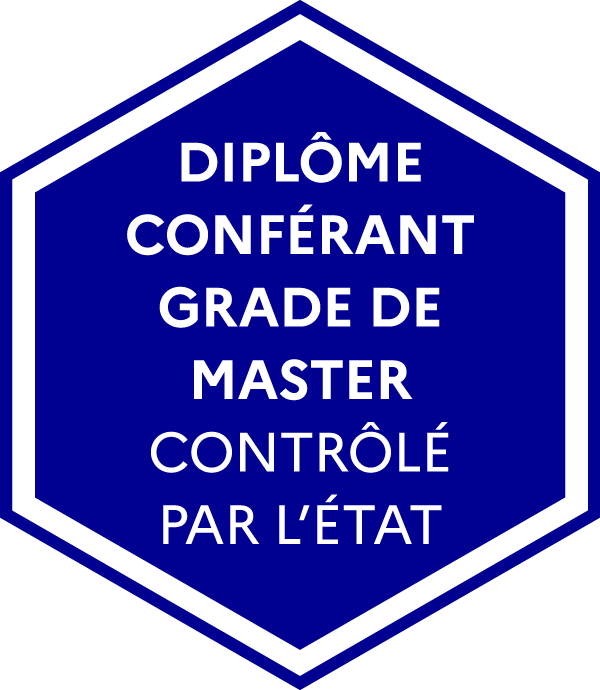Number of hours
- Lectures 30.0
- Projects -
- Tutorials -
- Internship -
- Laboratory works 30.0
ECTS
ECTS 5.0
Goal(s)
Ability for design and analysis of Hinfinity controlllers, knowledge on Linear Parameter Varying systems, know-how on robustness analysis methods
The main objective is to study a mechatronics approach for conceiving and for dimensioning intelligent systems.
John-Jairo MARTINEZ-MOLINA
Content(s)
ROBUST CONTROL COURSE
Introduction
Industrial examples (automotive and electromechanical applications).
1 Tools
Hinf norm, Small Gain theorem
Introduction to LMIs (definition, use of LMIs for stability analysis and control design)
2 Performance analysis
MIMO sensitivity functions, frequency-domain performance indices (sensitivity functions, stability and robustness margins, bandwidth, SISO and MIMO cases)
3 Hinf control design
Performance Specifications (selection of weighting functions, Mixed sensitivity problem)
Solving the Hinf control problem: General control conguration, Hinf controller structure (state feedback, dynamic output feedback), Problem solution using Riccati equations or LMIs -Bounded Real Lemma)
4 Linear Parameter Varying systems
Definition, stability issue, observer and control design
5 Uncertainty and robustness
Modelling the uncertainties (unmodelled dynamics, unstructured uncertainties, structured uncertainties, LFT representation)
Robust stability analysis (small gain theorem - unstructured uncertainties)
Robust performance analysis
mu-analysis - structured uncertainties
Modelisation, simulation and conception of mechatronic systems. Industrial and mobile robotics notions. Specification and evaluation of dynamical performances. Embedded control systems and reference generation. Disturbance estimation and adaptive rejection of disturbances. Fault-tolerant control notions. Code implementation in microprocessors.
PrerequisitesUE Automatique 1 (Automatic control 1)
UE Actionneurs (Actuators)
UE Systèmes Temps-réel (Real-time systems)
Linear Systems, Transfer and state space approach, frequency and time-domain analysis
Cadre « EVALUATION »
Session normale / First session
Evaluation rattrapable (ER) / ER assessment :
- devoir surveillé écrit de 2h / 2 hours supervised written exam (exemple)
- 2 compte-rendu de BE/projet / 2 project reports
- 1 Soutenance
Evaluation non rattrapable (EN) / EN assessment :
- 1 compte-rendu de TP / 1 Lab report
Si situation 100% distancielle / If distant learning mandatory:
Evaluation rattrapable (ER) / ER assessment : 2h d'examen écrit à distance / 2 hours homework (exemple)
- 2 compte-rendu de BE/projet / 2 project reports
- soutenance orale avec transparents remplacée par des transparents avec bande sonore
Evaluation non rattrapable (EN) / EN assessment :
- 1 compte-rendu de TP / 2 Lab reports
---------------
Session de rattrapage / Second session
EN : Evaluation non rattrapable / EN assessment: Retaking this assessment is not possible
ER 77% (dont 33% examen + 44% BE) + EN 23%
The exam is given in english only 
The course exists in the following branches:
- Curriculum - Master inter MARS - Semester 9 (this course is given in english only
 )
) - Curriculum - Master's Degree in Engineering ASI - Semester 9 (this course is given in english only
 )
)
Course ID : 5EU9RCM0
Course language(s): 
You can find this course among all other courses.
Mechatronic Systems: Fundamentals
Par Rolf Isermann
Springer Science & Business Media, 29 déc. 2007 - 624 pages
1. D. Alazard, C. Cumer, P. Apkarian, M. Gauvrit, and G. Ferreres. Robustesse et commande optimale. Cpadues Editions, 1999.
2. J.C. Doyle, B.A. Francis, and A.R. Tannenbaum. Feedback control theory. Macmillan Publishing Company, New York, 1992.
https://sites.google.com/site/brucefranciscontact/Home/publications
3. G. Duc and S. Font. Commande H1 et -analyse: des outils pour la robustesse. Herms, France, 1999.
4. G.C. Goodwin, S.F. Graebe, and M.E. Salgado. Control System Design. Prentice Hall, New Jersey, 2001.
csd.newcastle.edu.au
5. Scherer, C. and Wieland, S. (2004). Linear Matrix inequalities in Control. lecture support, DELFT University.
6. S. Skogestad and I. Postlethwaite. Multivariable Feedback Control: analysis and design. John Wiley and Sons, 2005.
www.nt.ntnu.no/users/skoge.
7. K. Zhou. Essentials of Robust Control. Prentice Hall, New Jersey, 1998. www.ece.lsu.edu/kemin
French State controlled diploma conferring a Master's degree




